#science education
Text
Woman Who Can Smell Parkinson’s Helps Develop Test
Joy Milne, 72, from Perth, Scotland, has a hyper-sensitive sense of smell, allowing her to be able to smell Parkinson’s disease, which progressively damages parts of the brain over many years.
She discovered her unusual ability when her late husband, Les, developed a different odour when he was 33. She described it as a ‘musky aroma’. That was 12 years before he was diagnosed with Parkinson’s. Les, who was a doctor, was determined to research the link between odour and Parkinson’s, and contacted Dr Tilo Kunath at the University of Edinburgh, who paired up with Professor Perdita Barran to begin the research. They determined that the reasons for a change in the scent of a person suffering the disease is due to a chemical change of the skin oil (sebum).
In the preliminary sessions, Milne was asked to smell T-shirts worn by people who had Parkinson’s and those who did not. She successfully identified all of the Parkinson’s patients, but told researchers that a member of the control group, a non-Parkinson’s patient, did smell like the disease. 8 months later, they were diagnosed with the disease.
Now, a team of researchers at the University of Manchester have developed a simple test involving a cotton bud swiped down the back of the neck that can identify those with Parkinson’s. The molecules on the cotton bud can be examined using mass spectrometry, which helps the diagnosis. This is a huge leap forward, as there is no definitive test for Parkinson’s, and a diagnosis is based on symptoms and medical history. Currently, there are no cures for Parkinson’s, but an early diagnosis can help begin the treatment early, lessening the speed of the deterioration.
Milne says she can sometimes smell that a person has Parkinson’s when walking down the street, but has been told by medical ethicists that she cannot tell them. She is continuing to work with scientists to see if she can smell other diseases, like cancer or TB, and hopes that one day her talent can be considered normal diagnosis.
Source: the Guardian, written by PA Media
#science#science communication#scicomm#stem#science education#biology#health#medical science#parkinson's disease
9K notes
·
View notes
Text
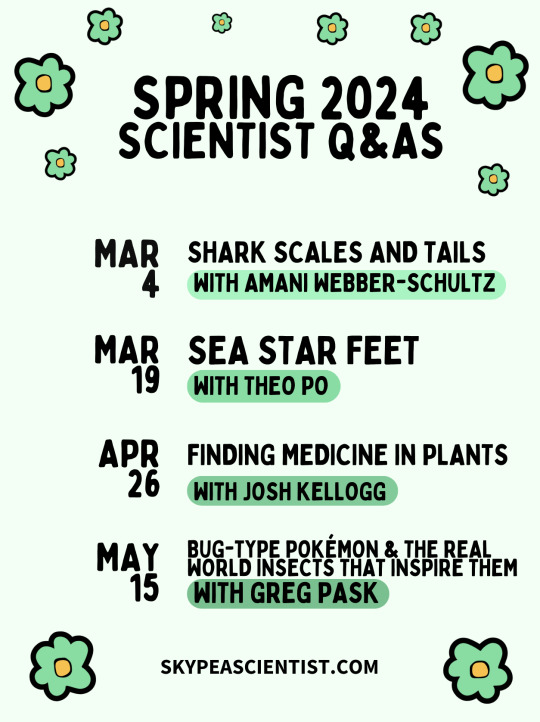
As many of you know, I run a program called Skype a Scientist! We match scientists with classrooms, scout troops, libraries, and more for Q&A sessions about science. We ALSO run monthly livestreams with hand-picked scientists on zoom webinar.
Here are the upcoming sessions. All are welcome to attend, and all sessions are free.
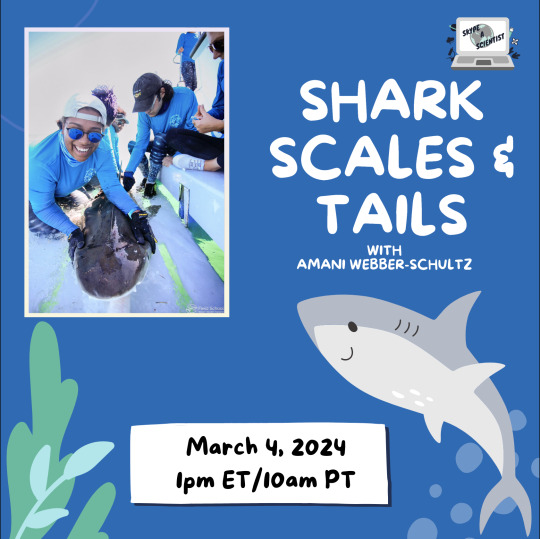
RSVP for Shark Scales and Tails here

RSVP for Sea Star Feet here
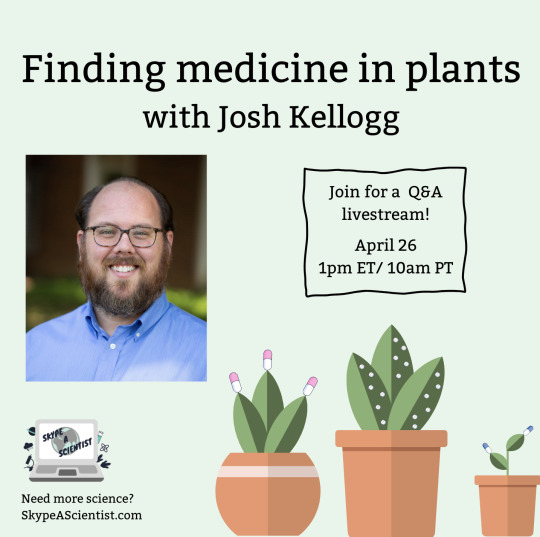
RSVP for Finding Medicine in Plants here

RSVP for Pokemon here
Also!!! and critically!!! If you want to get matched with a scientist for YOUR classroom, scout troop, library, etc, we would love love love to match you with one of our scientist volunteers. That's what we're here for. Sign up here.
#Science education#science teacher#sciteach#ed tech#edtech#Please tell a teacher you know#We have very little advertising money#reblog for the kids
523 notes
·
View notes
Text
Washington University has an incredible website about identifying meteorites run by Randy Korotev. It’s educational about what meteorites are and where they’re found (did you know that more meteorites have been found on Antarctica than on all other continents combined? did you know that 90% of meteorites are less than 14 cm / 5.5 inches long?) but its best feature is how fed it up it is with people who ask stupid questions and get combative (like, 243 emails combative) when told that actually, meteorites are quite rare. How fed up, you ask?

That fed up.
Some other highlights include:


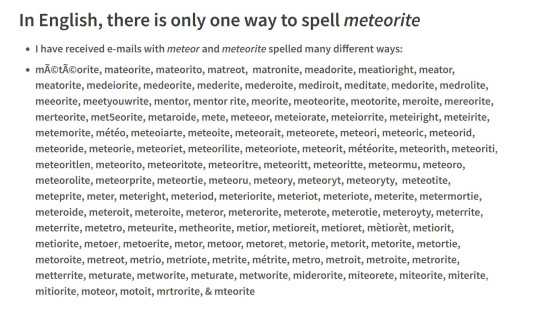

And last but not least:

790 notes
·
View notes
Text
The other day I was searching thru jstor to try to find stuff about making suburban areas better habitats and more eco-friendly, and I know one thing for certain now:
the problem is not that individual people just don't care about other living things or the world around them
the problem is that the average individual can name like 5 native plants that grow in their area and doesn't know what a tree's roots do or how they work, and the websites they are using to answer their questions use "invasive" interchangeably with "fast grower" and say shit like this

while meanwhile, the knowledgeable people that actually understand ecology write like this

2K notes
·
View notes
Text
Luckily the "what if the SHARK impregnated our ray???" seems to be dying down and bigger news organizations have the corrected information in their articles, but I wanted to share this great blog post by marine conservation biologist David Shiffman that covers both the cool actual science that got overshadowed while actually calling out the facility for how unscientifically they handled it and for the fact that they doubled down (esp since newer media they've put out is softly backtracking and it looks like they're attempting to play it off as a joke that the news misreported. Nope. They put the idea out there like it was as possible as parthenogenesis while calling themselves scientists at a "shark lab")
From the conclusion:
Unfortunately, poor handling of this story has made it likely that we are on track for another year where the most-shared news story about a shark or ray is pseudoscientific nonsense, rather than about their dire conservation needs, their importance to marine and coastal ecosystems, or amazing new discoveries about them.
As a longtime supporter of zoos and aquariums and the roles they play in public science education, I am especially troubled by some of the public-facing communications here. If your goal is sharing knowledge with the public, there’s value in gaining accurate knowledge about the subject yourself first. Sharing wrong facts is not “raising awareness” or educating the public, and falsely claiming “anything is possible, don’t trust the experts” is, to put it mildly, not helping the ocean.
It's a great article to drop in if the "omg shark/ray babies???" keeps spreading. Or if you just enjoy niche science drama. The aquarium world doesn't get much of that
#to call them out even harder than the article does: it wasnt a random staff at the facility it was the founder/ceo/curator who owns it#which im fine saying bc she kept signing her full ass name to every statement#and to her double down post thats linked in the article#marine biology#marine life#science education#idk i care a lot about a place calling itself a science center being so fucking bad at it#i guess the aquarium world doesnt need to deal with 'roadside zoo' level nonsense#so now that something like it came up people doing the YOURE NOT AFFILIATED WITH ME
72 notes
·
View notes
Text
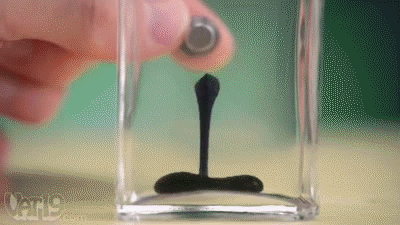
LIQUID MAGNETS
This is ferrofluid- a liquid substance that responds to the presence of magnets with these really cool reactions!
Ferrofluid is actually made of tons of tiny tiny particles of iron or another magnetic metal suspended in water. Each of the particles are coated in a surfactant to keep them from all bunching together, and that's why it looks like a cohesive liquid.
This compound is paramagnetic. That means that it won't automatically stick to iron or other magnetic materials, but when a magnetic field is applied, each of the tiny iron particle becomes a magnet and moves and reacts to the field. Depending on how you apply the magnetic field, this can create some pretty cool effects!
youtube
Ferrofluid was actually created in the early 1960s by Steve Papell, a NASA engineer that was trying to come up with a type of rocket fuel that can be easily moved around in zero gravity.
Today, ferrofluid is used in products like loudspeakers and hard drives, but they could potentially be used in the biomedical field as a way to help deliver drugs to certain areas of the body. The drugs would be attached to small amounts of ferrofluid, and then selectively released magnetic fields could help guide them to where they need to go.
You can also just... buy a bottle of it to play with like in the gif at the top. They sell it on Amazon (just be cautious and take appropriate precautions handling it if you have an unsealed container).
#stem#science#chemistry#biochemistry#medicine#science side of tumblr#stemblr#magnets#science experiments#science education#magnetism
235 notes
·
View notes
Text
Dear fellow plant lovers,
Welcome to a new year of learning and inspiration with Katia Plant Scientist!
2024 marks the third year of my science communication social media initiative that I started back in 2021 as a way to share my passion for botany and gardening with the wider world. Over this time, I have learned much about writing engaging, informative, and entertaining short essays about plants as well as creating videos that virtually transport viewers into my own garden or biology lab to see the plants up close. I have also made many new friends and professional connections in the world of horticulture and plant science through my public pages.
In this new year, I plan to launch my new career path as a science communicator as soon as I complete my PhD thesis at Imperial College London. Please keep following my journey!
best wishes, Katia Hougaard
January 1st, 2024
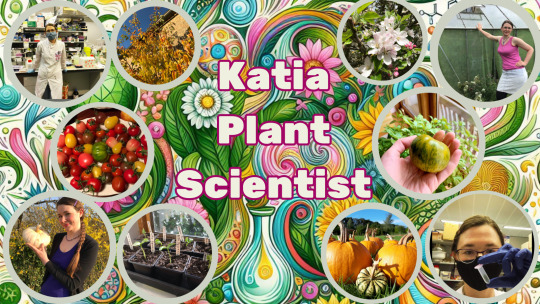
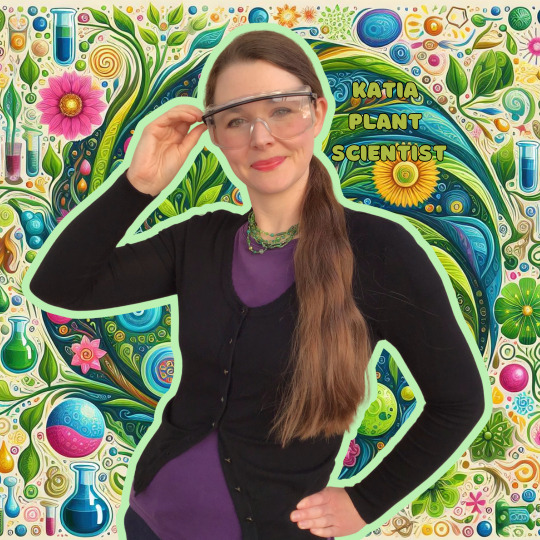
New profile photos feature original AI art made by DALL E based on concepts by Katia Hougaard.
#katia plant scientist#botany#plant biology#plants#plant science#katia hougaard#botanical#gardening#influencers#science communication#science communicator#diveristy in STEM#stem#stemblr#women in stem#science#plant scientist#mad scientist#research scientist#science education#sciencecore#mad science#biology#garden#greenery#ai artwork#dall e ai#new career#writing#personal post
21 notes
·
View notes
Note
A point a friend on discord made was
People with "mild" variations are often invalidated when they call themselves intersex and attacked, and not all people feel safe saying they are intersex for that reason and end up saying they are perisex. A term between the two would help with the safety of those people who do not feel safe and who are often forced to be put in a position they are not in.
Not all people with mild variations consider themselves intersex. However, they are not considered perisex because they have variations in sex.
Not everyone likes to use intersex. This is because they may find it very medicalizing (and sometimes the person has a variation in visible sex, but does not fit or does not want to see it fit into any medical term) or they may find it not medicalizing at all (some people really have problems with their sexual variation, causing disabilities, for example, and prefer to use more medical terms that define this). So, for those who feel that intersex is too medicalizing a term, you may prefer to use alternative terms
I'm the asker about spectrum and I wanted to let you know these points
Also. When I think about intersex as a spectrum, I meant in the linguistic/conceptual aspect. As like graysexual is in the asexual spectrum.
Myself, my intersex variation isn't studied yet (partial or mild EIS). And mesosex resonates with me. Even though in the end I could go with just being a dyadic ally or questioning/quoisex/extersex. I also feel as if like both the terms perisex and intersex could fit me
Some people also say sex is a statistically bimodal spectrum. What do you think about it?
Thanks for sharing! I'm glad the term mesosex resonates with you 😄 It's honestly really useful to hear from people who feel the term mesosex resonates with them. I put the word out there because I had a sense there's a demand but as somebody who feels solidly intersex I feel honestly weird having a say in a label I don't myself use.
If you didn't see it already, a mesosex person chimed into the original thread.
To me intersex is the anti-medicalizing term, especially in contrast to DSD, which to me is 100% medicalized. But that's just me!
Analogies about Biological Sex
So you also asked about my thoughts on sex as a "statistically bimodal spectrum", and the short answer is I think the term bimodal is misleading and possibly circular, and there are better analogies out there.
I already agree with what others have pointed out about sex not being a spectrum - a spectrum has one dimension (a line), and sex has dozens of dimensions (chromosomes, hormones, etc). Out of the analogies I've seen, I like most Hans Lindahl's train tracks analogy for sex development.
But I'm gonna guess that by "sex as a statistically bimodal spectrum" you mean "sex as a statistically probability distribution/density" and take this as something distinct from the sex-as-spectrum model.
As it turns out, I have a lot to say about "bimodal"
In my experience, people tend to have huge misconceptions about what statistically bimodal means. It understandably gets conflated a lot with the idea that there are two separate populations.
So let's think about height. People will say things like "height is bimodal" because they're conditioned to think that men and women are separate, and the average man is taller than the average woman.
And when they say things like "height is bimodal" they think the distribution for adults will look like this:

But here's what the adult human height distribution looks like:

The thing about normal/Gaussian distributions is that adding them together is tends to result in something that also looks normal/Gaussian.
If we look back at pink and blue distributions I hand drew, there's a visual sleight of hand going on there. Where the area under the curve is pink or blue, we can think of one pixel as representing one human in the data set. But in the part where they overlap, it's not one pixel per human, its one pixel for two humans - one from the womens' data set, one from the men's data set.
The result is that the size of the overlap looks half as small as it should be. It leads people to mistakenly think there is less overlap between men and women than there actually is.
So if we actually take that overlap and show how the distributions add together, we get something that immediately stops looking so "bimodal":

With the two probability distributions that I drew there might be a small dip in the middle, but it would be quite small. 🙃
Two probability distributions need to be really far apart for them to produce something that actually looks bimodal. (Specifically, the difference between the means needs to be smaller than twice the standard deviation - details here.)
True bimodal distributions are rare. They do exist in nature. But most of the time when people see a probability distribution with two peaks, it is a result of misleading visuals, noisy data, or poorly-binned histograms. 👀
In grad school I was taught that bimodality is a sign your data is suspicious: "Statisticians are trained to be suspicious of distributions with multiple modes. Such distributions usually indicate inhomogeneity in the system, or, in plainer language, different causes for the different modes. All familiar proverbs about the inadvisibility of mixing apples and oranges apply." (Gould, 1981)
In particular, the misinterpretation of (apparently) bimodal data has been used to confirm eugenicist ideas about racial differences, because when it comes to statistics we're always a step or two away from having to grapple with the legacy of eugenics. ⚠️
So let's get back the original question about seeing sex as statistically bimodal. The average person understands bimodal to mean "two populations", not statistical bimodality.
So before I even get into what sex even is, right off the bat this analogy is dangerously circular: sex is what it is because it's two separate populations.
Sex in humans is determined by a whole bunch of things that tend to correlate with each other (chromosomes, SRY gene, androgen levels, androgen sensitivity, estrogen levels, estrogen sensitivity, etc), so I can see the desire to illustrate that some things co-occur together more than others!
But I agree with @queercripintersex in the discussion of your previous ask that trying to project the multiple dimensions of sex into one dimension loses too much information, and is difficult to even do because so many factors are non-continuous (chromosomes, etc).
For the continuous variables, you can in theory try to find out if they have bimodal probability distributions. But quite rapidly run into issues of poor data. The data on testosterone levels in women is shockingly insufficient. Like I went looking for distributions of free testosterone levels and just look at how much noisier and sparse the data is for women (on the left) compared to men (on the right):
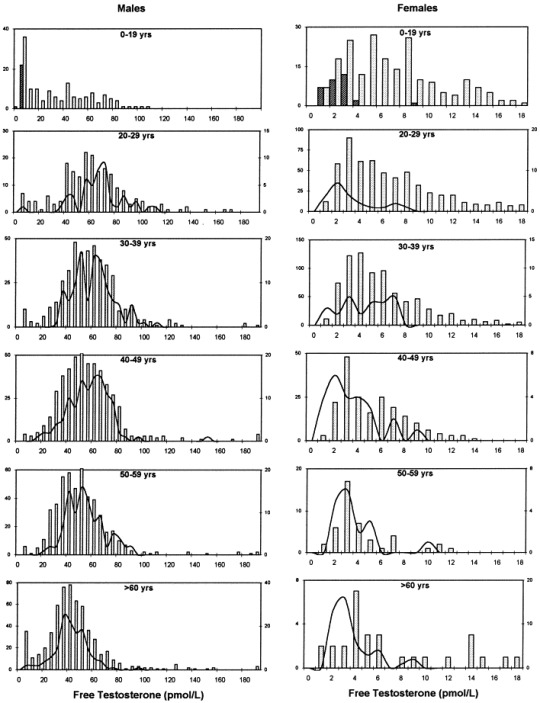
Source: Ooi et al, 1198
Even with all the noise in the data it's still unlikely that at any of the age categories, that the men's data and women's data added together would produce bimodal distributions. There's too much overlap.
As a general rule of thumb, any given physical difference (hormones, measurements, etc) has more variation within the sexes than between them.
Our culture has vastly overestimated the biological differences between the sexes. 😫 So I worry that adopting a sex-as-bimodal-distributions analogy will only feed this misconception. 🫤 I'm personally going to avoid using the analogy.
#sorry this is so long#but you asked an academic so this is what you get haha#eugenics: it's always there#biology of sex#biology education#science education#statistics education#text#intersex#mesosex#actuallyintersex#actually intersex
29 notes
·
View notes
Text
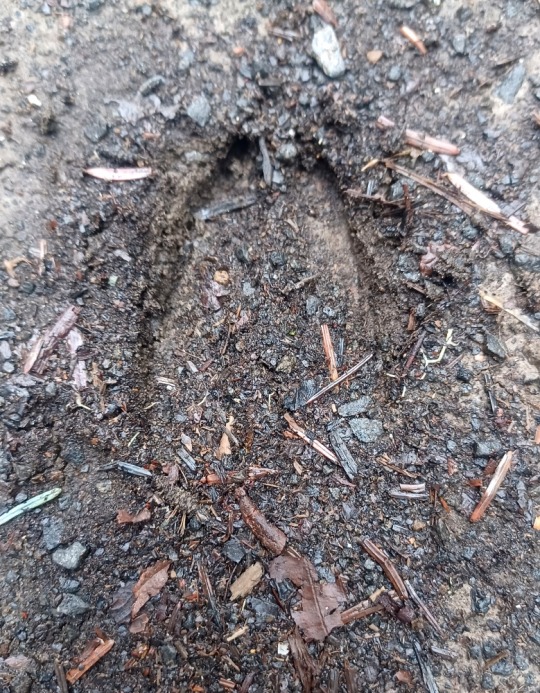
It’s Tell a Friend Friday!
Please enjoy this photo I took of the hoofprint of a Columbian black-tailed deer (Odocoileus hemionus columbianus).
Then tell someone you know about my work–you can reblog this post, or send it to someone you think may be interested in my natural history writing, classes, and tours, as well as my upcoming book, The Everyday Naturalist: How to Identify Animals, Plants, and Fungi Wherever You Go. Here’s where I can be found online:
Website - http://www.rebeccalexa.com
Rebecca Lexa, Naturalist Facebook Page – https://www.facebook.com/rebeccalexanaturalist
Tumblr Profile – http://rebeccathenaturalist.tumblr.com
BlueSky Profile - https://bsky.app/profile/rebeccanaturalist.bsky.social
Twitter Profile – http://www.twitter.com/rebecca_lexa
Instagram Profile – https://www.instagram.com/rebeccathenaturalist/
LinkedIn Profile – http://www.linkedin.com/in/rebeccalexanaturalist
iNaturalist Profile – https://www.inaturalist.org/people/rebeccalexa
Finally, if you like what I’m doing here, you can give me a tip at http://ko-fi.com/rebeccathenaturalist
#track#animal tracks#tracking#nature#wildlife#deer#black-tailed deer#mule deer#mammals#scicomm#science communication#ecology#environment#conservation#science#animals#science education
12 notes
·
View notes
Text
Static electricity is the imbalance of electric charge on a surface of a material. Static means fixed or stationary, therefore it is used in contrast to dynamic (moving) electricity which are in the form of electric currents. Typically atoms are neutral, which means they have the same number of electrons and protons.
Tap here @scienceisdope for more facinating science.🤓
#electricity#physics#static#static electricity#science#physics experiment#science experiments#science education#education
112 notes
·
View notes
Text
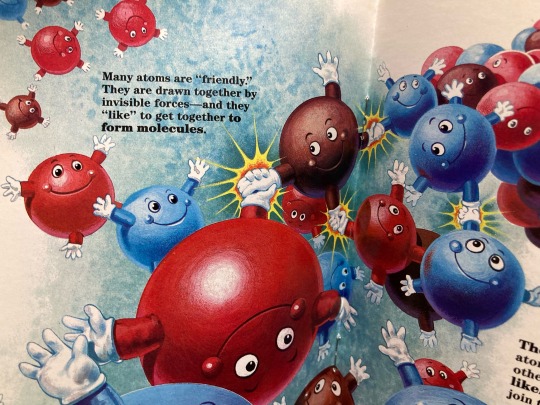
learning that molecules form because atoms want to hold hands. peace and love on planet earth
13 notes
·
View notes
Text
#science#science communication#scicomm#stem#science education#science blog#biology#realtionship#animal behavior#Monogamy#relationship study
704 notes
·
View notes
Text
How I feel promoting my free program to match scientists with classrooms for Q&A sessions
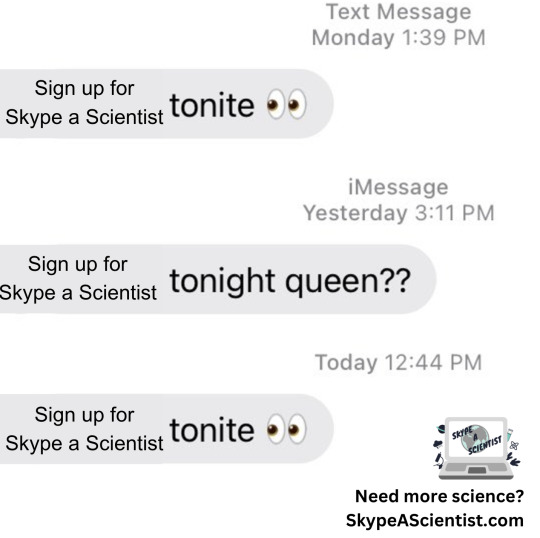
Many teachers have been working in overdrive for months (or years), so I can understand they might not have the energy to proverbially text back, but I still gotta tell 'em about Skype a Scientist. We're a nonprofit science education org that matches teachers and librarians with scientists for free Q&As about science.
In these sessions, you can:
Learn about the scientists' areas of expertise
Show your class what a real lab looks like
Talk about the many ways a career in science can take shape.
A 4th thing I haven't thought of yet
Here's how it works:
Step 1: Pick a category of science that your class would like to talk about
Step 2: Sign up on SkypeAScientist.com
Step 3: Get a match via email
Step 4: Connect with your scientist to discuss your classroom's interests and needs
Step 5: Talk about science in your classroom (on whatever platform you like, it does not have to be Skype).
243 notes
·
View notes
Text
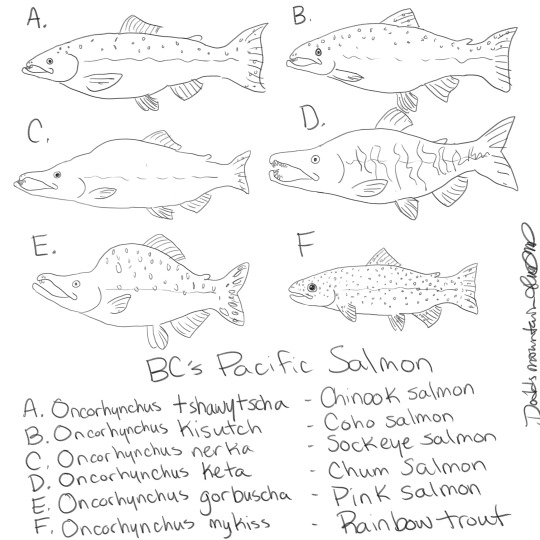
Now you know! (sizes not to scale)
17 notes
·
View notes
Text
#sandboxels#chemistry#chemical reactions#science#science education#stem#gamedev#browser games#indie games#gaming#pixel art#games#sandbox games#web games
15 notes
·
View notes
Text
Hello!
If you’re interested in science and science communication but feel daunted, my friend just started a YouTube channel! He is planning a series of educational videos on understanding science writing in a fun way :)
He’s only posted one video, but plans to do a whole series and more. You can check out the video here:
youtube
Subscribe to his channel if you want to see more!!
18 notes
·
View notes